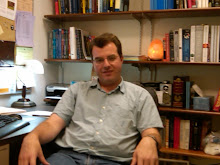My next reading will be Book 7 of the Book of Optics by Ibn al-Haytham, an Arab scientist of the 10th and 11th centuries. I read the first part of his treatise in 2009; in that part he debunks the ancient idea (going back to the much-lauded Greeks) that vision involves the emission of something from the eye. I skipped the next 5 books, which expand his theory of vision and then delve into image formation by curved mirrors. However, I recently came across an assertion that Ibn al-Haytham was the first person to discover that refraction phenomena can be derived from the Principle of Least Time, presaging Fermat's statement of the principle by more than 600 years. The Principle of Least Time is one of the most beautiful principles in physics, being closely related to the Lagrangian formulation of classical mechanics, and this coming year I am scheduled to teach optics in fall and Lagrangian mechanics in spring, so I absolutely MUST find out if the great Ibn al-Haytham has priority over Fermat in discovering the most beautiful principle in physics. If you do a Google search for "Ibn al-Haytham" and "Least Time" you will find a great many pages that assert this discovery, but so far I've found none that actually quote directly from his writings. Consequently, I'll have to read it for myself.
The matter gets complicated by the fact that Ibn al-Haytham's writings took two different forms, historically. Ibn al-Haytham did most of his work in Cairo (though he was apparently born in Iraq) and wrote it up in Arabic under the title Kitab al-Manazir (Book of Optics). However, much of his influence on the subsequent history of optics came via a Latin translation titled De Aspectibus (which, as I understand it, means roughly "On Perspective"). In the Latin translation his name was given as "Alhacen." The Latin translation is not entirely faithful to the original Arabic, which means that it is not always useful for gauging what Ibn al-Haytham actually thought. However, because of its influence the Latin translation is nonetheless worthy of study as a historical document, as a way of gauging what the Europeans did or didn't learn about optics from the Arabs. I've had trouble finding a translation of Book 7 directly from Arabic to English (it's easier to find translations of the first book, which made the vital contribution of debunking the emission theory), so I'm going to be using Prof. Mark Smith's English translation of the Latin version.
Saturday, September 10, 2016
Wednesday, September 7, 2016
Oh, there you go, bringing class into it again
I'm not sure I agree with everything in this article from the latest American Conservative, but one needn't agree with all of it to appreciate the extra analytical dimension that it brings. Thinking about class along more dimensions than rich and poor, bringing ideology and sector into it, helps a lot.
Subscribe to:
Comments (Atom)


